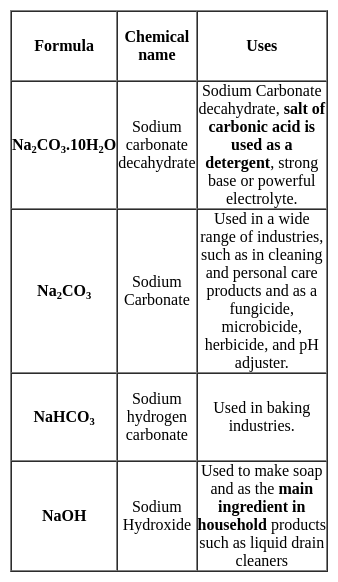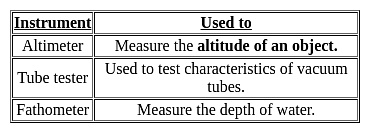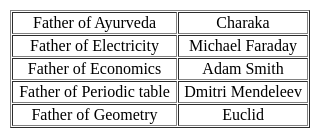Software Development Exam > Software Development Tests > Test: General Awareness (General Science and Science & Technology) - Software Development MCQ
Test: General Awareness (General Science and Science & Technology) - Software Development MCQ
Test Description
10 Questions MCQ Test - Test: General Awareness (General Science and Science & Technology)
Test: General Awareness (General Science and Science & Technology) for Software Development 2025 is part of Software Development preparation. The Test: General Awareness (General Science and Science & Technology) questions and answers have been prepared
according to the Software Development exam syllabus.The Test: General Awareness (General Science and Science & Technology) MCQs are made for Software Development 2025 Exam.
Find important definitions, questions, notes, meanings, examples, exercises, MCQs and online tests for Test: General Awareness (General Science and Science & Technology) below.
Solutions of Test: General Awareness (General Science and Science & Technology) questions in English are available as part of our course for Software Development & Test: General Awareness (General Science and Science & Technology) solutions in
Hindi for Software Development course.
Download more important topics, notes, lectures and mock test series for Software Development Exam by signing up for free. Attempt Test: General Awareness (General Science and Science & Technology) | 10 questions in 10 minutes | Mock test for Software Development preparation | Free important questions MCQ to study for Software Development Exam | Download free PDF with solutions
Test: General Awareness (General Science and Science & Technology) - Question 1
The image formed by a plane mirror is always ________.
Detailed Solution for Test: General Awareness (General Science and Science & Technology) - Question 1
Test: General Awareness (General Science and Science & Technology) - Question 2
The splitting of white light into its component colours is called:
Detailed Solution for Test: General Awareness (General Science and Science & Technology) - Question 2
Test: General Awareness (General Science and Science & Technology) - Question 3
Which of the following has the shortest wavelength?
Detailed Solution for Test: General Awareness (General Science and Science & Technology) - Question 3
Test: General Awareness (General Science and Science & Technology) - Question 4
Name the vitamin whose deficiency causes excessive bleeding?
Detailed Solution for Test: General Awareness (General Science and Science & Technology) - Question 4
Test: General Awareness (General Science and Science & Technology) - Question 5
Which among the following is a fat-soluble vitamin?
Detailed Solution for Test: General Awareness (General Science and Science & Technology) - Question 5
Test: General Awareness (General Science and Science & Technology) - Question 6
In a neutralisation reaction, an acid reacts with a base to give-
Detailed Solution for Test: General Awareness (General Science and Science & Technology) - Question 6
Test: General Awareness (General Science and Science & Technology) - Question 7
What is the chemical formula of baking soda?
Detailed Solution for Test: General Awareness (General Science and Science & Technology) - Question 7
Test: General Awareness (General Science and Science & Technology) - Question 8
The instrument _________ is used for detecting electric current is
Detailed Solution for Test: General Awareness (General Science and Science & Technology) - Question 8
Test: General Awareness (General Science and Science & Technology) - Question 9
Which of the following is formed from the combination of algae and fungi?
Detailed Solution for Test: General Awareness (General Science and Science & Technology) - Question 9
Test: General Awareness (General Science and Science & Technology) - Question 10
Who is regarded as the "father of the atomic bomb"?
Detailed Solution for Test: General Awareness (General Science and Science & Technology) - Question 10
Information about Test: General Awareness (General Science and Science & Technology) Page
In this test you can find the Exam questions for Test: General Awareness (General Science and Science & Technology) solved & explained in the simplest way possible.
Besides giving Questions and answers for Test: General Awareness (General Science and Science & Technology), EduRev gives you an ample number of Online tests for practice
Download as PDF




























